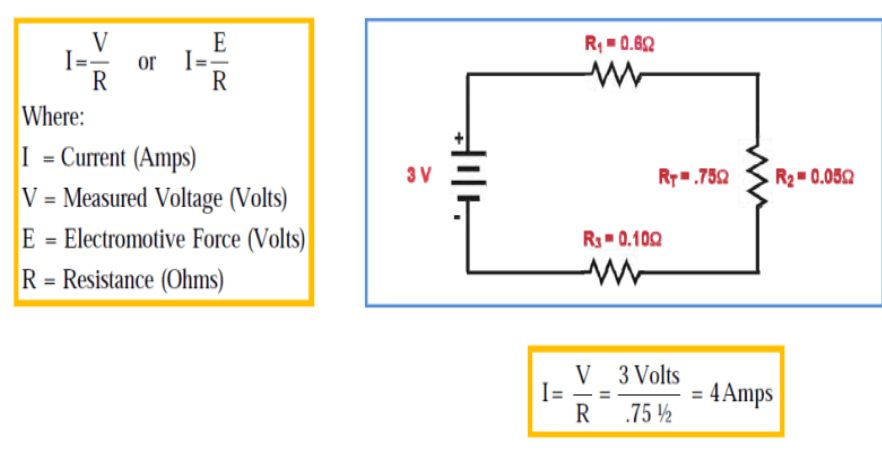Table of Contents
ToggleWhat is Alternating Current(AC) ?
Alternating current is the rate of flow of electrical charge through a conductor.
I = dQ/dt
Current is measured as the amount of charge passing through a cross section of a conductor over time.
Specifically, current is measured in amperes (A). One ampere of current is equivalent to 6.25×1018 electrons passing through a cross section of the conductor per second.
If a current of 0.50 amps flows through a circuit for 120 seconds. How much charge will have passed into a component in the circuit?
dQ = I dt = 0.5 * 120 = 60 C
Flow of Alternating Current(AC)

Electrons in a conductor (like water in a river) require a force to cause a current flow to occur.
The force that causes water to flow in a river is gravity. The force that causes charge to flow in a conductor is the voltage.
Voltage is the separation of charge between two points on a conductor.The electrical current described so far is referred to as direct current (DC) because it flows in one direction. Later we will examine a current that constantly oscillates. This type of current is called alternating current (AC).
What is Resistance?
Resistance is a measure of the opposition of an electrical circuit to the flow of current. Every component of the power system has a resistance associated with it.
The resistance of a component is measured in ohms. The Greek letter omega(Ω) is the symbol used for ohms.
Series and parallel resistances

What is Voltage?
The force that causes charge to flow (current) in a conductor is the voltage. The separation of charge between two points in a conductor gives rise to a potential difference or a voltage.
A voltage source is a device that is capable of producing or creating a voltage difference across its terminals. Examples are Battery, Synchronous generators.
Calculation method of different Laws
What is Ohm’s law?
Ohm’s law states that the amount of current flowing through a circuit element is directly proportional to the voltage across the element, and inversely proportional to the resistance of the element.
What is Kirchhoff’s Law?
The first law is known as Kirchhoff’s current Law
The sum of all the currents flowing into and out of any one point in an electrical circuit equals zero.
The second law is known as Kirchhoff’s Voltage Law
The sum of all the voltage rises and voltage drops around any closed path in an electrical circuit equals to zero.
What is Thevenin’s Equivalent?
An analytical method used to change a complex circuit into a simple equivalent circuit consisting of a single resistance in series with a source voltage.


What is Electrical Power?
Power is the rate at which energy is expended to do work. DC power is defined as voltage times current and is measured in watts.
Energy can be thought of as the capability to do work, whereas power is therate at which energy is expended in doing work.
A car with a full tank of fuel has a certain amount of stored energy available. The rate at which the car’s engine can convert the energy in the fuel to motion of the car is the power of the engine.
Similarly, a charged battery has stored energy available and the power delivered by the battery is the rate at which the energy is expended to do work.
Instantaneous Demand:The instantaneous demand of a power system is equal to the amount of power delivered to the system at one point in time.The instantaneous demand is equal to the voltage times the current and is measured in watts. The instantaneous demand is constantly changing in a power system.
Energy: Energy is defined as the power used over a period of time and is measured in watt-hours.
Frequency: Power system frequency is the number of sine wave cycles that the alternating current completes each second. In India, the power system frequency is 50 cycles per second. One cycle per second is equal to one hertz(HZ).
Vector: A vector is a quantity that contains both magnitude and direction information. The sine and cosine functions can be stated as vectors if we assume they are both oscillating at the same frequency. vector descriptions of the sine and cosine functions simply mean that the cosine and sine have the same magnitude but the cosine waveform leads the sine waveform by90°.
Phasor and Vector: The concept of a phasor is necessary when you are relating sine and cosine functions that do not oscillate at the same frequency. A phasor is a vector that oscillates at a specific frequency.
To specify a vector you state the magnitude and direction. To specify a phasor, you must state the magnitude, direction, and frequency.
The difference between a phasor and a vector is that a phasor oscillates or rotates while a vector is stationary.
Phasor Angle: A phase angle can be conveniently illustrated on a phasor diagram. A phase angle is the angle between any two phasors. The phase angle may be between two voltages, two currents, or between a voltage and a current.
